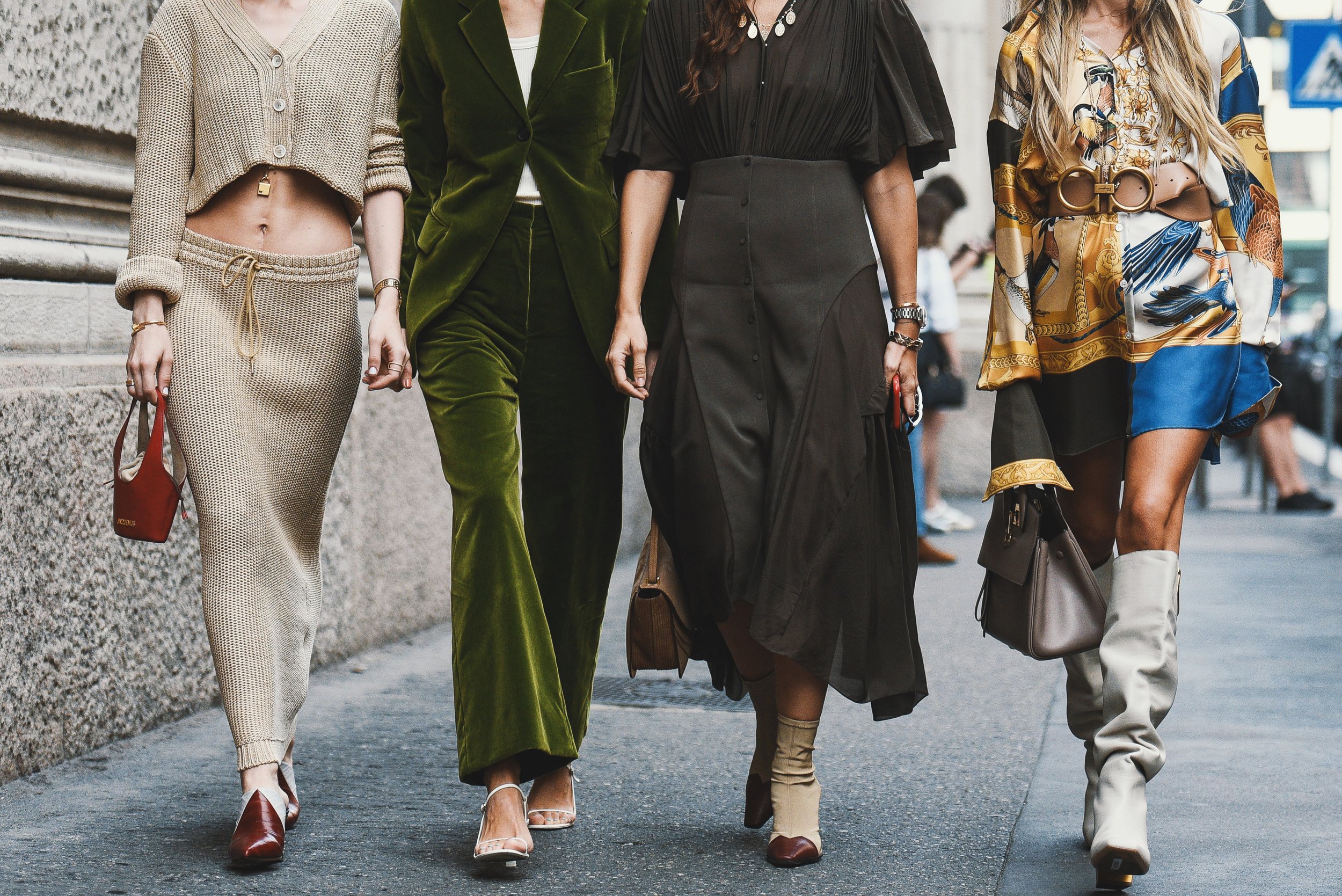The Difference in Fashion Rental vs. Leasing
Understanding the Business and Lifestyle Benefits of Renting vs. Leasing Clothes
In a world rethinking possession—from rideshares to streaming services—the fashion industry is undergoing a similar transformation.
A circular economy is at the forefront of this industry change, and it’s more than just a buzzword. It’s access over ownership through the use of fashion rental platforms.
Although 'rent' and 'lease' are often used interchangeably, they serve different roles within the circular fashion space. Whether you're looking to elevate your everyday wardrobe or need a standout outfit for a special event, there's a tailored option to fit every moment.
One-Night Stand vs. Long-Term Relationship
Think of rental as a short-term fling and leasing as a year-long relationship. Neither is necessarily forever, but each serves a purpose. Depending on your lifestyle, commitment level, and how you want fashion to show up in your life.
For the consumer, there are pros and cons for each option. Check out the overall difference of both below:
What Does It Mean to Rent?
By renting a garment, you’re agreeing to a set period to have access to it. The timeframe usually lasts a few days up to one week. This is a binding agreement, where returning the item later than a week is not an option.
There is less flexibility in terms of need. If you decide the piece you rented could serve you better than just a few days, most companies will ask you to send it back and start the process over again.
The price difference is also a key factor in renting, as the rates are lower for 2-3 days for casual clothes. For options like renting an evening dress for a week, the price takes a stark jump.
When to Rent Clothes
Since rental timeframes are short, it’s perfect for moments when your needs shift—like putting together a weekend look or dressing for an important interview. Renting is especially popular for these one-off occasions, giving you access to high-end pieces without the full price tag.
While casual wear can be rented, it's usually the standout, statement looks that make renting feel worth it. If you’re renting a plain blouse, it isn’t nearly as enthralling as renting a designer garment.
What Does It Mean to Lease?
Leasing clothing is an agreement that can span a longer term, lasting weeks or even a month. It’s more flexible as the item is not meant to be returned in days, and companies want the lifespan of the item to extend for as long as the quality of the garment allows.
It isn’t meant to confine your fashion experience, but elevate your lifestyle. You develop a sense of familiarity, without the clutter of actually buying the pieces outright.
The price difference is set depending on how long you decide to keep the item. For longer periods of time, this becomes a more cost-effective choice. Instead of paying a higher rate for quick convenience, the lessee saves money by paying a lower rate overall, as the item will be consistently used.
When to Lease Clothes
While renting clothes for an occasion encourages you to develop a persona, leasing an item develops a routine and alters your style to fulfill a truer identity.
As the rates are more affordable, leasing can allow you to experiment with high-quality pieces at a cheaper rate than renting short-term. Event wear is not typical in leasing as the item is meant to be worn for many occasions throughout the week or month you have it.
This doesn’t necessarily mean leasing has to be boring. It introduces an element of experimentation with pieces you’ve been dying to wear, and allows a relationship to grow between you and that item. Often, people who lease develop a heightened sense of their style, as the clothing can be exciting and integrated into their wardrobe over time.
From Transactions to Trust
We’ve discussed how consumers enjoy renting and leasing, but what about the business?
Both of these options encourage an ecosystem to be built within each transaction. Consumers develop loyalty to the brand, whether their go-to is a dress for a wedding or a new designer that they want to flaunt in everyday life. This allows businesses to encourage commitment, but with an exit plan.
The reselling of clothes has only grown in popularity, and this is a chance for businesses to get in on that concept and turn the recommerce industry to their benefit. The business of the circular economy is to cut the time-intensive hassle that consumers are already going through when trying to get rid of their clothes.
Final Thoughts: Choosing Between Renting and Leasing
As fashion pivots toward sustainability and flexibility, understanding the difference between renting and leasing clothing empowers you to make smarter, more intentional decisions. Whether you’re testing a bold new trend for a single event or curating a wardrobe that evolves with your lifestyle, both options support a more circular, less wasteful approach to fashion.
The next time you're debating whether to rent or lease, consider your needs, your budget, and how long you want that garment to be part of your story.




